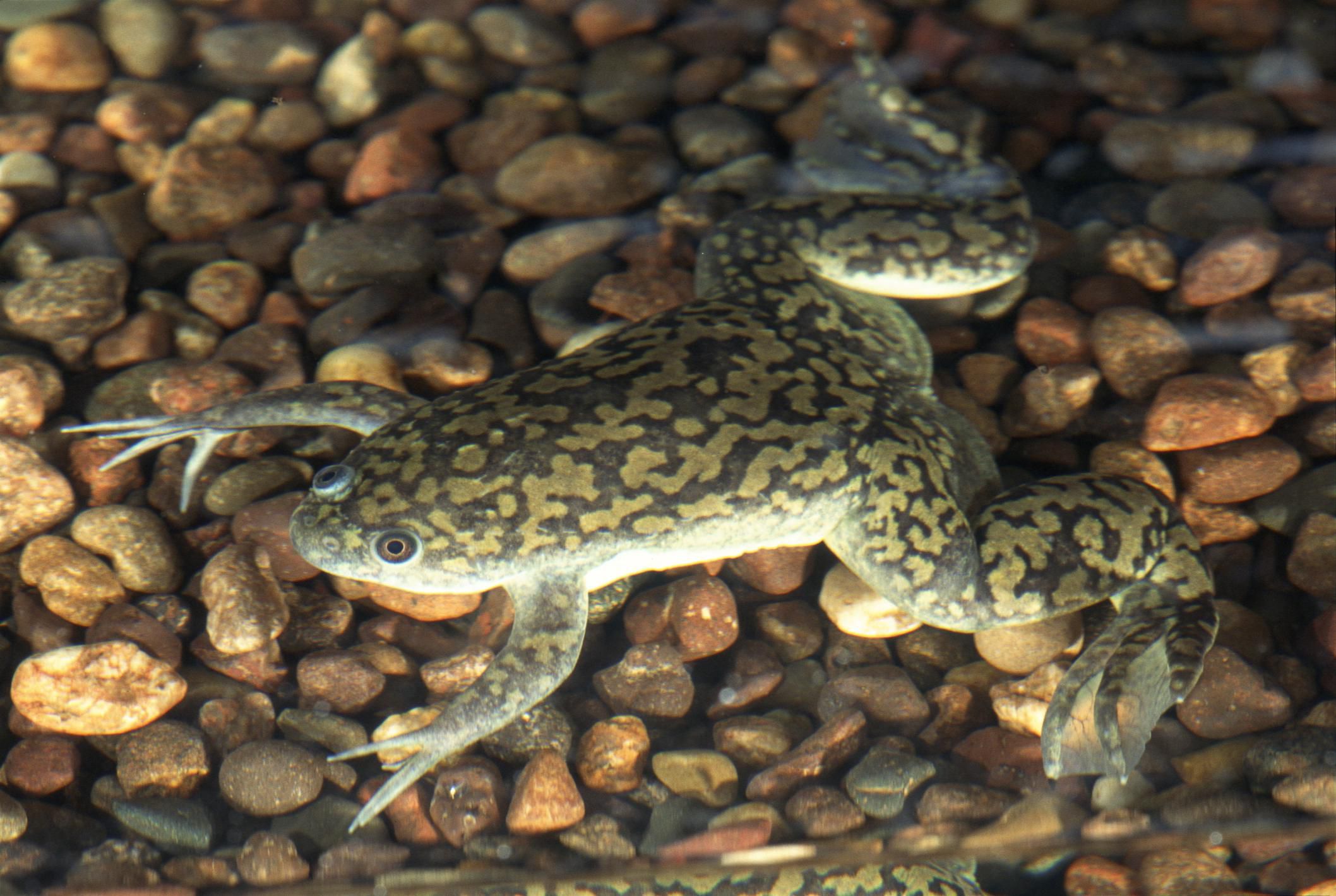The African clawed frog (Xenopus laevis) is a species of aquatic frog native to sub-Saharan Africa. Here are some key points about African clawed frogs:

- Appearance: African clawed frogs have a flattened body and are typically greenish-brown or olive in color. They have webbed feet with sharp claws on their hind feet, which give them their name.
- Aquatic Adaptations: These frogs are well adapted for an aquatic lifestyle. They have lungs for breathing air but also possess gills, which they use as tadpoles. As adults, they rely mainly on lungs for respiration.
- Size: African clawed frogs are relatively large compared to other frogs. Females can reach lengths of 10-13 cm (4-5 inches), while males are slightly smaller, usually around 7-10 cm (3-4 inches).
- No Tadpole Stage: One unique characteristic of African clawed frogs is that they skip the typical tadpole stage found in most frogs. Instead, they hatch as fully-formed froglets, capable of swimming and feeding on their own.
- Aquatic Lifestyle: These frogs are primarily aquatic, inhabiting a variety of freshwater environments such as ponds, lakes, and slow-moving rivers. They are excellent swimmers and have powerful hind legs for propelling themselves through the water.
- Feeding Habits: African clawed frogs are opportunistic feeders. They have a carnivorous diet, preying on a wide range of aquatic organisms, including insects, small fish, crustaceans, and other amphibians.
- Sensory Adaptations: They have poor eyesight but rely on their senses of touch and hearing to locate prey. They have lateral lines on their bodies that help them detect movement and vibrations in the water.
- Importance in Research: African clawed frogs have been extensively used in scientific research. They were historically used for pregnancy tests due to their sensitivity to the hormone human chorionic gonadotropin (hCG). They have also played a significant role in the field of developmental biology.
- Decline in the Wild: While African clawed frogs are still widespread in their native range, some populations have experienced declines due to habitat destruction and pollution. Additionally, they have been introduced to other parts of the world, where they have become invasive species, negatively impacting native ecosystems.
- Pet Trade: African clawed frogs are popular in the pet trade due to their unique appearance and low-maintenance requirements. However, it’s important to note that they can live for several years and require appropriate care, including a suitable aquatic habitat and a proper diet.
Remember that the information provided here is based on the knowledge available up until September 2021, and there may have been new findings or developments since then.